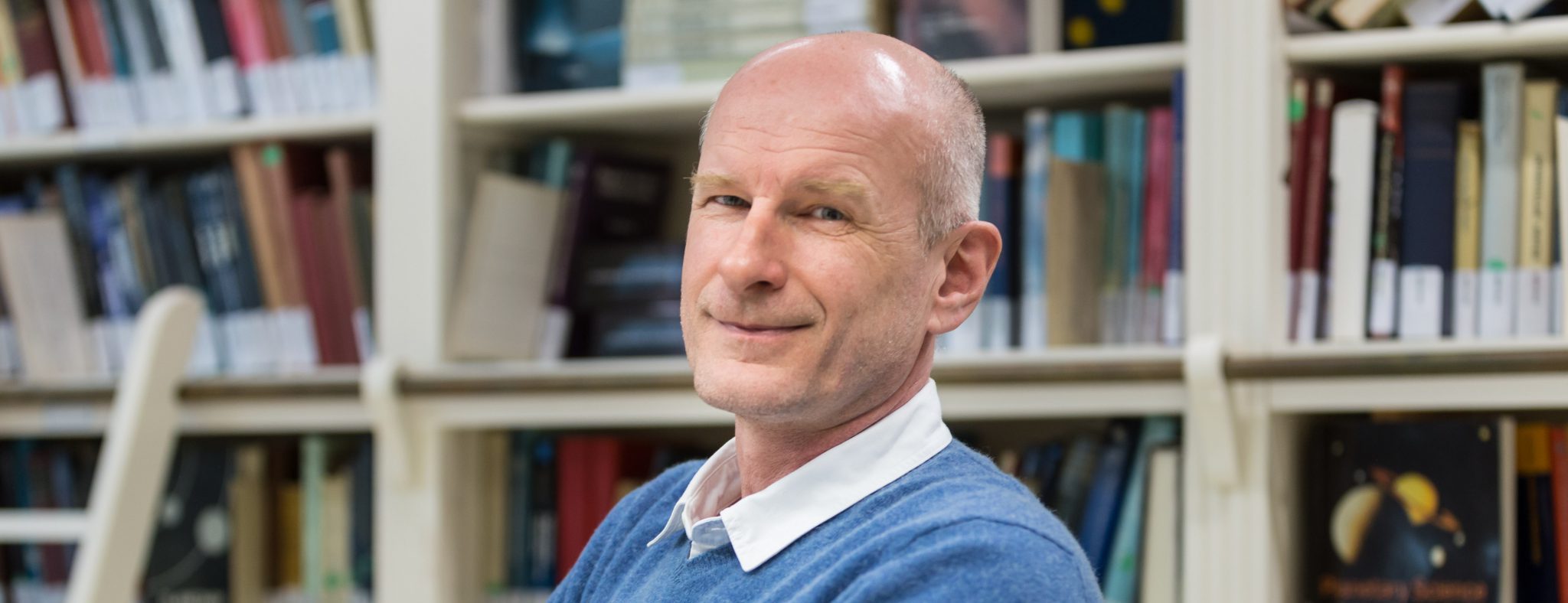
Teacher Story: Alex de Koter
FNWI Lecturer of the Year 2020 Alex de Koter: heavyweight in astronomy with a passion for teaching
If it gets too hard, you have to step back
“At FNWI, 140 lecturers were nominated. It’s good to see such a large number, because it means that students think about their appreciation for the way teachers teach. It is a joy as well as an honour to win this election, but the most important thing about a competition like this is that it turns the spotlight on teaching and the quality of teaching.”
Teaching is only meaningful if learning takes place. I believe that as a teacher you should be constantly trying to find out what a student is thinking and doing, why things are going well and why things are going wrong. You have to be in constant dialogue; asking what they understand, what they don’t, and adjusting lectures accordingly. If it gets too hard, you have to take a step back, otherwise you will lose them. Find a new starting point together.”
Us instead of you
Lack of self-confidence
“It is often a lack of self-confidence that causes students to remain silent. They have thoughts like: ‘this probably would be a stupid remark’. I often point out that there is no such thing as a stupid remark. If someone gives a wrong answer, I don’t say, that’s wrong; instead, I will say something like: ‘What you say I find interesting, but I was thinking of something else, myself.’ In doing so, I shift the focus to the content rather than the individual. If I don’t know the answer to a question myself, I am open about it and make us consider the issue as a group. That’s also the essence of science, you often don’t know what something is, at first.”
Engagement, attention span and small talk
“I spend five to ten minutes of the two-hour class on socializing. I ask how everyone is doing, ask questions even of those whose screens are black [in an online class, ed.] In addition, I regularly – sometimes every 10 minutes – insert unexpected mini-breaks in which I discuss things other than the course content. For example, I may ask what the meaning of someone’s first name is. This often leads to interesting short conversations that keep the students focused, precisely by breaking through the course material with small talk. This way you build a bond. In addition, I try to make things visual and more concrete with drawings on the board. For example, I may draw a telescope with a stick figure next to it, and then tell a student: ‘This is you, Annemiek, since you asked a question about this, earlier.’ I also often wrap difficult material in anecdotes drawn from real life. You don’t have to be a comedian, but a joke every now and then keeps it light and is helps with the attention span.”
linking students and behaviours to topics
“I remember a lot of what students say about the lesson materials over the course of the lecture series and often refer back to it. For example, I will say: ‘As Tom mentioned a few weeks ago….’ Each student has his or her own topic that I use in this manner when I address them. This engages them and keeps them on their toes. It’s also easier to address someone this way. Actively asking questions can be quite intimidating, but in this way it feels comfortable and personal. If someone gets shy, I roll it back to the group. I don’t want people to sit there with a sense of dread. If someone does something I don’t like – looking at their phone, for example – I ask a question that is related to the course and make a joke that refers to the undesirable behaviour, but does not directly address the individual student. Next time someone looks at their phone, all I have to do is mention the topic I linked to the behaviour the first time and everyone immediately gets it and laughs. By resolving something in a non-personal context, no one feels personally attacked and you create a safe environment.”
Finding practice in theory
Knowing names and being seen
Being a positive rolemodel and cultivating insight
In conclusion, about Alex
As Folia reports [in Dutch], students praise Alex de Koter for his strong anecdotes and stories, the fact that he knows all students by name, creates an atmosphere of inclusion and involves students in the lectures. Moreover, he knows how to combine recent discoveries with humour and thus treat the study material in a clear manner.
His colleagues describe him as a man with a great, genuine interest in what moves his students, who does his best to put himself in the other’s shoes and uses that knowledge to tailor his teaching and advice as much as possible. They think that students feel seen and heard by him and see him as a warm and inspiring role model.
Got curious?
More about Alex de Koter:





